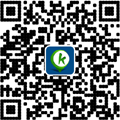You need training in the symbols and in the manipulation of those symbols to work out mathematical problems.
你需要对这些符号以及运用这些符号解开数学难题的训练。
Even something as basic as counting has to be taught. Formal mathematics is not something that little children can do naturally.
即使简单如数数这样的事情都必须被教授。形式数学不是小孩子天生就能做的事情。
And it wasn’t even part of human culture until a few thousand years ago.
直到几千年前,它甚至都不是人类文化中的一部分。
Well, it might be interesting to ask the question: are these two abilities linked somehow?
提出下面这个问题也许很有趣:这两种能力在某种程度上有联系吗?
Are people who are good at approximating numbers also proficient in formal mathematics?
擅长近似数字的人也会精通形式数学吗?
So, to find out, researchers created an experiment designed to test ANS in 14-year-olds.
于是为了弄清真相,研究人员创造了一个设计用来测试14岁孩子的ANS的实验。
They had these teenagers sit in front of a computer screen. They then flash a series of slides in front of them.
他们让这些青少年坐在一个电脑屏幕前,然后在他们面前快速放映了一系列图片。
Now, these slides had varying numbers of yellow and blue dots on them.
这些图片上有不同数量的黄色和蓝色圆点。
One slide might have more blue dots than yellow dots, let’s say...six yellow dots and nine blue dots.
一张图片上的蓝点也许比黄点多,比如有6个黄点,9个蓝点。
The next slide might have more yellow dots than blue dots. The slide would flash just for a fraction of a second.
下一张图片上也许黄点比蓝点多。这些图片会在零点几秒内闪过。
So you know, there was no time to count the dots. And then the subjects would press a button to indicate whether they thought there were more blue dots or yellow dots.
所以没有时间可以数这些圆点。然后这些实验对象会按一个按钮表明他们认为图片上的蓝点更多还是黄点更多。










